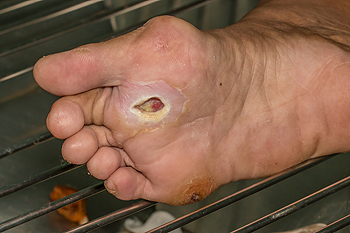 Diabetic patients often develop foot conditions as a result of elevated glucose levels in the bloodstream. It can be common for neuropathy to develop, which may cause difficulty in feeling existing cuts or bruises that may be on the feet. Research has indicated that calluses can develop quicker in people who have diabetes, and it may be beneficial to have your podiatrist properly cut out the calluses. If a foot ulcer develops, it typically requires immediate treatment. They are generally found at the base of the big toe, or on the ball of the foot. If it is neglected, an infection may develop, and this may lead to amputation. A proper diagnosis can include having an X-ray taken, which will be helpful in determining if the bone is infected. If you have diabetes, it is strongly recommended that you seek the care of a podiatrist who can help you to maintain this condition.
Diabetic patients often develop foot conditions as a result of elevated glucose levels in the bloodstream. It can be common for neuropathy to develop, which may cause difficulty in feeling existing cuts or bruises that may be on the feet. Research has indicated that calluses can develop quicker in people who have diabetes, and it may be beneficial to have your podiatrist properly cut out the calluses. If a foot ulcer develops, it typically requires immediate treatment. They are generally found at the base of the big toe, or on the ball of the foot. If it is neglected, an infection may develop, and this may lead to amputation. A proper diagnosis can include having an X-ray taken, which will be helpful in determining if the bone is infected. If you have diabetes, it is strongly recommended that you seek the care of a podiatrist who can help you to maintain this condition.
Diabetic foot care is important in preventing foot ailments such as ulcers. If you are suffering from diabetes or have any other concerns about your feet, contact one of our podiatrists from Lovely Foot Associates, PC. Our doctors can provide the care you need to keep you pain-free and on your feet.
Diabetic Foot Care
Diabetes affects millions of people every year. The condition can damage blood vessels in many parts of the body, especially the feet. Because of this, taking care of your feet is essential if you have diabetes, and having a podiatrist help monitor your foot health is highly recommended.
The Importance of Caring for Your Feet
Patients with diabetes should have their doctor monitor their blood levels, as blood sugar levels play such a huge role in diabetic care. Monitoring these levels on a regular basis is highly advised.
It is always best to inform your healthcare professional of any concerns you may have regarding your feet, especially for diabetic patients. Early treatment and routine foot examinations are keys to maintaining proper health, especially because severe complications can arise if proper treatment is not applied.
If you have any questions please feel free to contact our office located in Johnstown, PA . We offer the newest diagnostic and treatment technologies for all your foot and ankle needs.
Read more about Diabetic Foot Care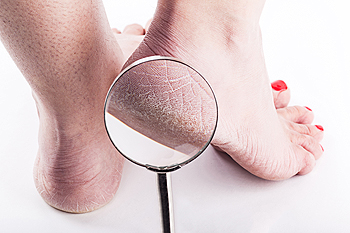 The condition that is known as cracked heels may occur as a result of frequently wearing shoes that have an open back. Additional reasons why this ailment may develop can consist of standing on hard surfaces for the majority of the day, or from medical conditions such as eczema or psoriasis. The skin on the outer edge of the heel is generally affected, and the cracks, or fissures can become painful if they are left untreated. Moderate relief can be found when the feet are washed and dried, followed by using a good moisturizer several times per day. If the skin on the heel begins to bleed, it is strongly suggested that you be under the care of a podiatrist who can properly treat and manage cracked heels.
The condition that is known as cracked heels may occur as a result of frequently wearing shoes that have an open back. Additional reasons why this ailment may develop can consist of standing on hard surfaces for the majority of the day, or from medical conditions such as eczema or psoriasis. The skin on the outer edge of the heel is generally affected, and the cracks, or fissures can become painful if they are left untreated. Moderate relief can be found when the feet are washed and dried, followed by using a good moisturizer several times per day. If the skin on the heel begins to bleed, it is strongly suggested that you be under the care of a podiatrist who can properly treat and manage cracked heels.
Cracked heels are unsightly and can cause further damage to your shoes and feet. If you have any concerns, contact one of our podiatrists from Lovely Foot Associates, PC. Our doctors can provide the care you need to keep you pain-free and on your feet.
Cracked Heels
Cracked heels appear unappealing and can make it harder for you walk around in sandals. Aside from looking unpleasant, cracked heels can also tear stockings, socks, and wear out your shoes. There are several methods to help restore a cracked heel and prevent further damage.
How Do You Get Them?
Dry skin is the number one culprit in creating cracked heels. Many athletes, walkers, joggers, and even swimmers suffer from cracked heels. Age and skin oil production play a role to getting cracked heels as well.
Promote Healing
Over the counter medicines can help, especially for those that need instant relief or who suffer from chronic dry feet.
Wear Socks – Wearing socks with medicated creams helps lock in moisture.
Moisturizers – Applying both day and night will help alleviate dryness which causes cracking.
Pumice Stones – These exfoliate and remove dead skin, which allows for smoother moisturizer application and better absorption into the skin.
Change in Diet
Eating healthy with a well-balanced diet will give the skin a fresh and radiant look. Your body responds to the kinds of food you ingest. Omega-3 fatty acids and zinc supplements can also revitalize skin tissue.
Most importantly, seek professional help if unsure how to proceed in treating cracked heels. A podiatrist will help you with any questions or information needed.
If you have any questions, please feel free to contact our office located in Johnstown, PA . We offer the newest diagnostic and treatment technologies for all your foot care needs.
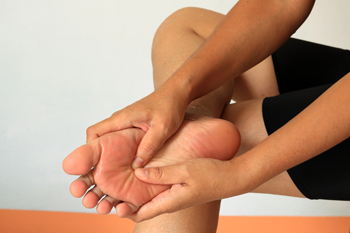 Tarsal tunnel syndrome may arise from repeated pressure that results in damage to the posterior tibial nerve. Symptoms such as sharp pains, the feeling of pins and needles, and a burning sensation may occur if this syndrome is affecting you. Tarsal tunnel syndrome may be caused by inflammation from arthritis, diabetes, severely flat feet, and inflammation from injuries or trauma. Frequent stretching and rest between high levels of activity may help to prevent this syndrome from occurring. It is recommended that you see a podiatrist for a proper diagnosis and advised recovery regime.
Tarsal tunnel syndrome may arise from repeated pressure that results in damage to the posterior tibial nerve. Symptoms such as sharp pains, the feeling of pins and needles, and a burning sensation may occur if this syndrome is affecting you. Tarsal tunnel syndrome may be caused by inflammation from arthritis, diabetes, severely flat feet, and inflammation from injuries or trauma. Frequent stretching and rest between high levels of activity may help to prevent this syndrome from occurring. It is recommended that you see a podiatrist for a proper diagnosis and advised recovery regime.
Tarsal tunnel syndrome can be very uncomfortable to live with. If you are experiencing tarsal tunnel syndrome, contact one of our podiatrists of Lovely Foot Associates, PC. Our doctors can provide the care you need to keep you pain-free and on your feet.
Tarsal Tunnel Syndrome
Tarsal tunnel syndrome, which can also be called tibial nerve dysfunction, is an uncommon condition of misfiring peripheral nerves in the foot. The tibial nerve is the peripheral nerve in the leg responsible for sensation and movement of the foot and calf muscles. In tarsal tunnel syndrome, the tibial nerve is damaged, causing problems with movement and feeling in the foot of the affected leg.
Common Cause of Tarsal Tunnel Syndrome
The Effects of Tarsal Tunnel Syndrome
A physical exam of the leg can help identify the presence of tarsal tunnel syndrome. Medical tests, such as a nerve biopsy, are also used to diagnose the condition. Patients may receive physical therapy and prescriptive medication. In extreme cases, some may require surgery.
If you have any questions please feel free to contact our office located in Johnstown, PA . We offer the newest diagnostic and treatment technologies for all your foot and ankle needs.
 Many patients choose to have foot surgery performed as an option to relieve severe pain and discomfort. Relief may be found when toenail removal is chosen to correct chronically infected ingrown toenails. Bunion surgery may be a choice to consider if the bunion is painful and unsightly. Research has indicated it is helpful to wear orthotics following a bunionectomy, as this may help to achieve long lasting relief. If pain is felt from a deformed ankle, the surgery that may help diminish the discomfort is referred to as an ankle fusion. Additionally, this type of surgery may help patients who have ankle arthritis, and neuromuscular disorders. If you have foot pain, and are considering surgery, it is strongly advised that you schedule a consultation with a podiatrist who can properly guide you toward making the choice that is correct for you.
Many patients choose to have foot surgery performed as an option to relieve severe pain and discomfort. Relief may be found when toenail removal is chosen to correct chronically infected ingrown toenails. Bunion surgery may be a choice to consider if the bunion is painful and unsightly. Research has indicated it is helpful to wear orthotics following a bunionectomy, as this may help to achieve long lasting relief. If pain is felt from a deformed ankle, the surgery that may help diminish the discomfort is referred to as an ankle fusion. Additionally, this type of surgery may help patients who have ankle arthritis, and neuromuscular disorders. If you have foot pain, and are considering surgery, it is strongly advised that you schedule a consultation with a podiatrist who can properly guide you toward making the choice that is correct for you.
Foot surgery is sometimes necessary to treat a foot ailment. To learn more, contact one of our podiatrists of Lovely Foot Associates, PC. Our doctors will assist you with all of your foot and ankle needs.
When Is Surgery Necessary?
Foot and ankle surgery is generally reserved for cases in which less invasive, conservative procedures have failed to alleviate the problem. Some of the cases in which surgery may be necessary include:
What Types of Surgery Are There?
The type of surgery you receive will depend on the nature of the problem you have. Some of the possible surgeries include:
Benefits of Surgery
Although surgery is usually a last resort, it can provide more complete pain relief compared to non-surgical methods and may allow you to finally resume full activity.
Surgical techniques have also become increasingly sophisticated. Techniques like endoscopic surgery allow for smaller incisions and faster recovery times.
If you have any questions please feel free to contact our office located in Johnstown, PA . We offer the newest diagnostic and treatment technologies for all your foot and ankle needs.
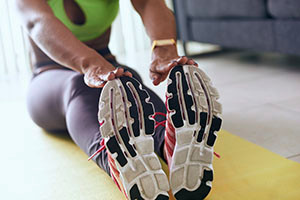 Many people have a strong desire to run in a marathon. Research has indicated the importance of warming up properly as the training regime begins, and this may be helpful in preventing running injuries. An injury to the plantar fascia typically starts by noticing pain in the heel. It is recommended that the calves and arches are properly stretched before beginning the physical training that is necessary to run a marathon. This can help to keep the muscles and tendons flexible. Ankle injuries may be avoided by performing heel drops, which can help to build strength in the ankles. Additionally, it is helpful to wear running shoes that are made of a lightweight material, and have adequate cushioning. If you enjoy the sport of running, and would like additional information about how the feet may be affected by running injuries, please consult with a podiatrist.
Many people have a strong desire to run in a marathon. Research has indicated the importance of warming up properly as the training regime begins, and this may be helpful in preventing running injuries. An injury to the plantar fascia typically starts by noticing pain in the heel. It is recommended that the calves and arches are properly stretched before beginning the physical training that is necessary to run a marathon. This can help to keep the muscles and tendons flexible. Ankle injuries may be avoided by performing heel drops, which can help to build strength in the ankles. Additionally, it is helpful to wear running shoes that are made of a lightweight material, and have adequate cushioning. If you enjoy the sport of running, and would like additional information about how the feet may be affected by running injuries, please consult with a podiatrist.
Exercising your feet regularly with the proper foot wear is a great way to prevent injuries. If you have any concerns about your feet, contact one of our podiatrists of Lovely Foot Associates, PC. Our doctors will treat your foot and ankle needs.
How to Prevent Running Injuries
Many common running injuries are caused by overuse and overtraining. When the back of the kneecap starts wearing out and starts causing pain in your knee, this is commonly referred to as runner’s knee. Runner’s knee is a decrease in strength in your quadriceps and can occur if you’re not wearing properly fitted or supporting shoes. To prevent runner’s knee, focusing on hip strengthening is a good idea, as well as strengthening your quads to keep the kneecaps aligned.
What Are Some Causes of Running Injuries?
- One cause of a common running injury is called iliotibial band syndrome.
- Plantar fasciitis is also another common injury.
- Stress fractures can occur from overtraining, lack of calcium, or even your running style.
Best Ways to Prevent Running Injuries
- Wear footwear that fits properly and suits your running needs.
- Running shoes are the only protective gear that runners have to safeguard them from injury.
- Make a training schedule. Adding strengthening exercises as well as regular stretching can help keep you strong and limber and can lessen the possibility of injuries.
- Stretching keeps muscles limber; this will help you gain better flexibility.
If you have any questions please feel free to contact our office located in Johnstown, PA . We offer the newest diagnostic and treatment technologies for all your foot and ankle needs.
 A common condition that many patients suffer from is known as toenail fungus. There are noticeable symptoms that exist with this condition and they often consist of yellowed and thickened toenails. In severe cases, the nail may separate from the nail bed, and can eventually fall off. It is caused by a fungus that lives and thrives in moist environments. These areas can include public swimming areas, shower room floors, and locker rooms. It is considered to be contagious, and measures can be implemented that may help in preventing this condition. These can consist of wearing appropriate shoes while in these types of places, and it is helpful to avoid sharing towels and shoes. There are several treatment methods that can be used for toenail fungus, and it is advised to consult with a podiatrist who can provide the best options for you.
A common condition that many patients suffer from is known as toenail fungus. There are noticeable symptoms that exist with this condition and they often consist of yellowed and thickened toenails. In severe cases, the nail may separate from the nail bed, and can eventually fall off. It is caused by a fungus that lives and thrives in moist environments. These areas can include public swimming areas, shower room floors, and locker rooms. It is considered to be contagious, and measures can be implemented that may help in preventing this condition. These can consist of wearing appropriate shoes while in these types of places, and it is helpful to avoid sharing towels and shoes. There are several treatment methods that can be used for toenail fungus, and it is advised to consult with a podiatrist who can provide the best options for you.
For more information about treatment, contact one of our podiatrists of Lovely Foot Associates, PC. Our doctors can provide the care you need to keep you pain-free and on your feet.
Toenail Fungus Treatment
Toenail fungus is a condition that affects many people and can be especially hard to get rid of. Fortunately, there are several methods to go about treating and avoiding it.
Antifungals & Deterrence
Oral antifungal medicine has been shown to be effective in many cases. It is important to consult with a podiatrist to determine the proper regiment for you, or potentially explore other options.
Applying foot powder on the feet and shoes helps keep the feet free of moisture and sweat.
Sandals or open toed shoes – Wearing these will allow air movement and help keep feet dry. They also expose your feet to light, which fungus cannot tolerate. Socks with moisture wicking material also help as well.
If you have any questions please feel free to contact our office located in Johnstown, PA . We offer the newest diagnostic tools and technology to treat your foot and ankle needs.
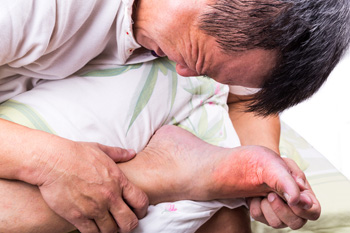 Severe pain and discomfort in the big toe and surrounding area may be indicative of a condition that is known as gout. It is a type of arthritis that can develop as a result of elevated uric acid levels in the bloodstream, which can cause crystals to form. These can lodge in the joints of the big toe. Additional symptoms that many patients can experience may consist of swelling, redness, and difficulty moving the toe. There are certain foods that have high levels of purines, which can contribute to abnormal uric acid levels. These can include shellfish, red meat, and drinks that have excess sugar. Many times gout attacks will improve over several days. There may be measures that can be implemented that can help to reduce future gout episodes. These can include eating foods that are healthy, and drinking plenty of water daily. If you are suffering from gout, it is strongly suggested that you seek the counsel of a podiatrist who can offer you correct treatment options.
Severe pain and discomfort in the big toe and surrounding area may be indicative of a condition that is known as gout. It is a type of arthritis that can develop as a result of elevated uric acid levels in the bloodstream, which can cause crystals to form. These can lodge in the joints of the big toe. Additional symptoms that many patients can experience may consist of swelling, redness, and difficulty moving the toe. There are certain foods that have high levels of purines, which can contribute to abnormal uric acid levels. These can include shellfish, red meat, and drinks that have excess sugar. Many times gout attacks will improve over several days. There may be measures that can be implemented that can help to reduce future gout episodes. These can include eating foods that are healthy, and drinking plenty of water daily. If you are suffering from gout, it is strongly suggested that you seek the counsel of a podiatrist who can offer you correct treatment options.
Gout is a painful condition that can be treated. If you are seeking treatment, contact one of our podiatrists from Lovely Foot Associates, PC. Our doctors will treat your foot and ankle needs.
What Is Gout?
Gout is a form of arthritis that is characterized by sudden, severe attacks of pain, redness, and tenderness in the joints. The condition usually affects the joint at the base of the big toe. A gout attack can occur at any random time, such as the middle of the night while you are asleep.
Symptoms
Risk Factors
Prior to visiting your podiatrist to receive treatment for gout, there are a few things you should do beforehand. If you have gout you should write down your symptoms--including when they started and how often you experience them, important medical information you may have, and any questions you may have. Writing down these three things will help your podiatrist in assessing your specific situation so that he or she may provide the best route of treatment for you.
If you have any questions, please feel free to contact our office located in Johnstown, PA . We offer the newest diagnostic and treatment technologies for all your foot care needs.
Read more about Everything You Need to Know About Gout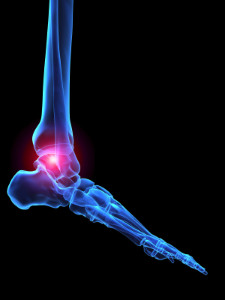 If arthritis is present in the feet, it may change the way an individual walks. This condition affects the joints in the feet, and it may be difficult to walk on specific surfaces. There are a variety of reasons why this ailment may occur. These can consist of injuries that have occurred to the foot, existing structural problems, or genetic factors. One of the most common forms of arthritis in the feet is known as osteoarthritis, and this typically affects older people. Additional types of arthritis can include gout and rheumatoid arthritis. The symptoms that are often associated with this condition can consist of limited mobility in the joints, severe pain and discomfort, and the affected area of the foot may feel warm and appear red. Moderate relief may be felt when the proper shoes are worn. These can include choosing shoes that have ample room for the toes to move freely in, and it is beneficial to wear shoes that have an enclosed heel. This can help to provide maximum support and stability. If you are afflicted with arthritic feet, it is strongly suggested that you seek the advice of a podiatrist who can guide you toward proper treatment options.
If arthritis is present in the feet, it may change the way an individual walks. This condition affects the joints in the feet, and it may be difficult to walk on specific surfaces. There are a variety of reasons why this ailment may occur. These can consist of injuries that have occurred to the foot, existing structural problems, or genetic factors. One of the most common forms of arthritis in the feet is known as osteoarthritis, and this typically affects older people. Additional types of arthritis can include gout and rheumatoid arthritis. The symptoms that are often associated with this condition can consist of limited mobility in the joints, severe pain and discomfort, and the affected area of the foot may feel warm and appear red. Moderate relief may be felt when the proper shoes are worn. These can include choosing shoes that have ample room for the toes to move freely in, and it is beneficial to wear shoes that have an enclosed heel. This can help to provide maximum support and stability. If you are afflicted with arthritic feet, it is strongly suggested that you seek the advice of a podiatrist who can guide you toward proper treatment options.
Arthritis can be a difficult condition to live with. If you are seeking treatment, contact one of our podiatrists from Lovely Foot Associates, PC. Our doctors can provide the care you need to keep you pain-free and on your feet.
Arthritic Foot Care
Arthritis is a joint disorder that involves the inflammation of different joints in your body, such as those in your feet. Arthritis is often caused by a degenerative joint disease and causes mild to severe pain in all affected areas. In addition to this, swelling and stiffness in the affected joints can also be a common symptom of arthritis.
In many cases, wearing ill-fitting shoes can worsen the effects and pain of arthritis. Wearing shoes that have a lower heel and extra room can help your feet feel more comfortable. In cases of rheumatoid arthritis, the arch in your foot may become problematic. Buying shoes with proper arch support that contour to your feet can help immensely.
Alleviating Arthritic Pain
It is best to see your doctor for the treatment that is right for your needs and symptoms. Conditions vary, and a podiatrist can help you determine the right method of care for your feet.
If you have any questions, please feel free to contact our office located in Johnstown, PA . We offer the newest diagnostic tools and technology to treat your foot and ankle needs.